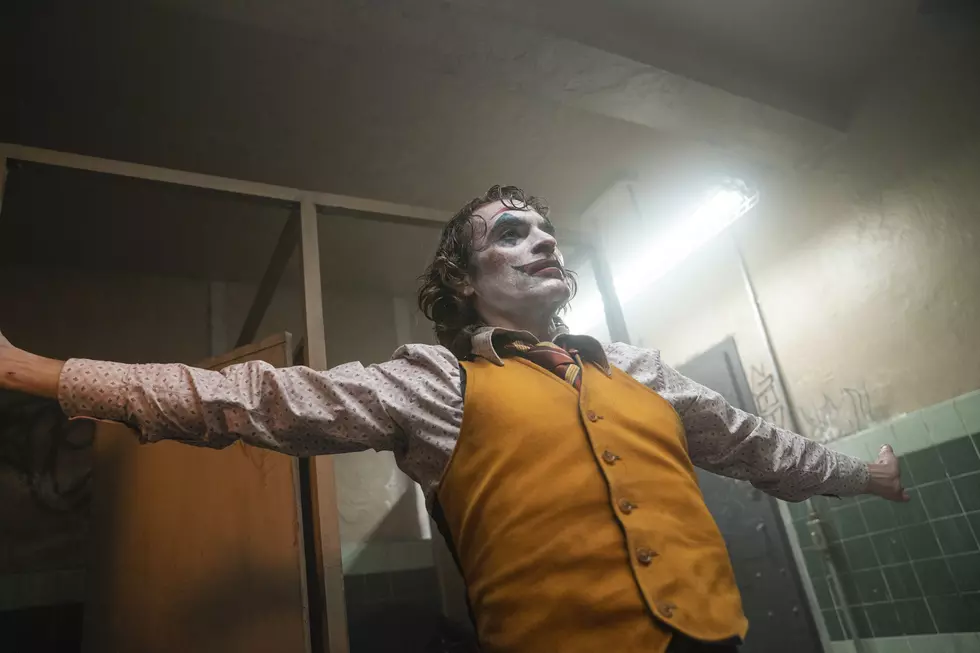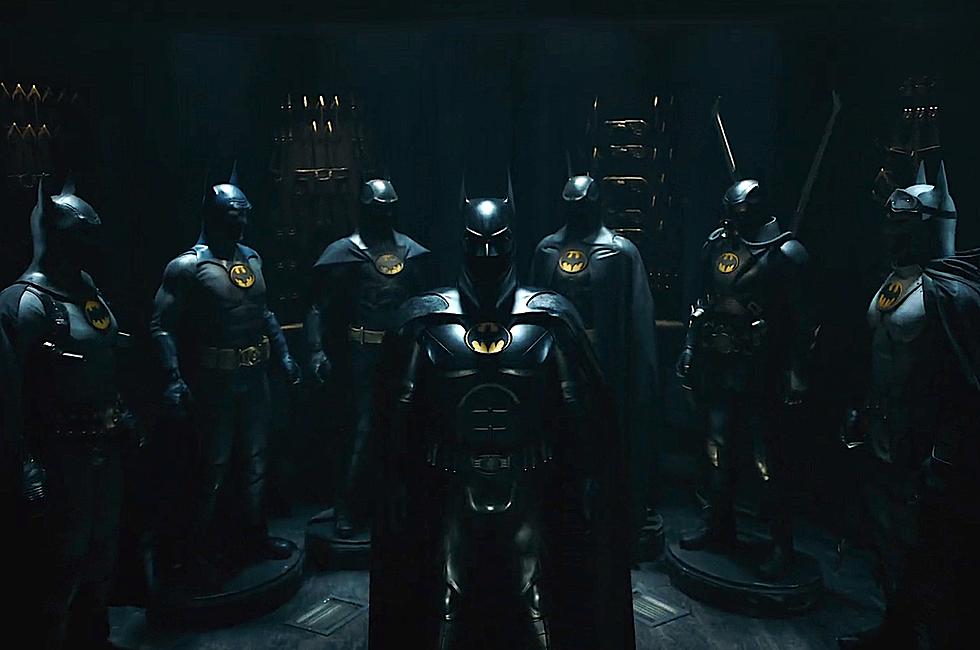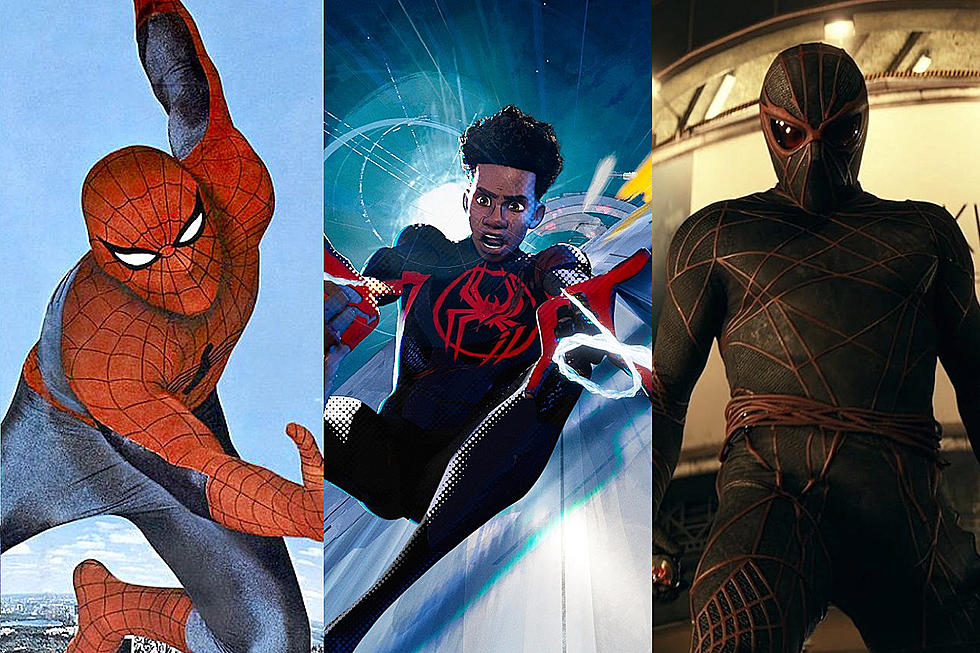
How DC Found Its Groove By Doing the Opposite of Marvel
Some critics might have rejected Joker (and by some critics, I mean me personally and specifically), but audiences embraced it. In its opening weekend, Joker grossed $93.5 million in U.S. theaters, the most ever for an October release. As of this writing, the film has already made almost $250 million worldwide. That’s on the heels of Shazam, about a relatively unknown hero, grossing $140 million in the U.S. and earning a fleet of positive reviews, and Aquaman, about the adventures of Jason Momoa’s sea-faring Justice Leaguer talking to fish for several hours (YEAYUHH!), earning more than $1.1 billion worldwide.
Not all these movies have been perfect, and not all of them have been massive financial windfalls. But they represent a marked upswing for Warner Bros. and its roster of its films based on DC Comics. For years, they have looked like a pale shadow of their rivals over at Disney, who’ve turned the characters of its subsidiary Marvel Comics into the most successful mega-franchise in history. Suddenly, Warners looks like legitimate competition, and it is because of a noticeable and welcome change in tactics, using what I would describe as the “Costanza Strategy” to move from looking like a bad carbon copy of Marvel to a studio that actively tries to look as different from Marvel as possible.
The Costanza Strategy is a theory of life rooted in science and empirical fact, and inspired by a famous episode of Seinfeld (the second-best episode in the entire series according to the internet’s foremost expert on the show). On “The Opposite,” a depressed, unemployed George Costanza has an epiphany: Every single choice he has made in his life to that point has been wrong, and his life is the polar opposite of what he wants it to be. With nothing to lose, George begins an experiment. He will choose the opposite of what he would normally do in every situation. As Jerry describes this scheme, which we’ll call the Costanza Strategy, “If every instinct you have is wrong, then the opposite would have to be right.”
The Costanza Strategy reaps immediate dividends. George finds renewed dating success, moves out of his parents house in Queens, and lands a dream job working for the New York Yankees. George credits his improved fortunes entirely to doing the opposite. “It’s all happening because I'm completely ignoring every urge towards common sense and good judgment I've ever had,” George exclaims, noting “This is no longer just some crazy notion. Jerry, this is my religion.”
I have no idea whether the executives at Warners are big Seinfeld fans, or if they’ve even seen “The Opposite.” But it sure looks like they have applied the Costanza Strategy to their DC Comics movies. Where just a few years their strategy seemed entirely geared around mimicking Marvel and its beloved Cinematic Universe, now it seems designed instead to do the opposite.
DC wasn’t always chasing Marvel’s movies; for decades, the roles were reversed. As late as 1997, the totality of Marvel’s theatrical movie footprint were a couple long-forgotten serials from the 1940s and a disastrous Howard the Duck. It wasn’t until Blade in 1998 that producers finally started taking a second look at Marvel’s incredible library of characters — by which point there had already been a very successful Superman franchise and a very successful Batman franchise from the Distinguished Competition.
After Batman & Robin <Arnold Schwarzenegger voice> cooled off</Arnold Schwarzenegger voice> the Batman franchise in 1997, Marvel began gaining ground, first with Fox’s X-Men and then with Sony’s Spider-Man. Although the biggest and most critically acclaimed comic-book movie of the 2000s was Christopher Nolan’s The Dark Knight, in hindsight the most important may be Jon Favreau’s Iron Man, because it laid the foundations for more than 20 more Marvel movies to come over the next ten years.
Warner Bros. spent the end of the 2000s and the early 2010s finishing off Nolan’s Batman trilogy and producing a lavish and deeply faithful adaptation of Watchmen from director Zack Snyder — along with a couple of epic misfires, Jonah Hex and Green Lantern. By the time they started their own cinematic universe in 2013’s Man of Steel, Marvel had already released seven in theirs. After that, Warner Bros. seemed desperate to catch up to Marvel as quickly as possible. Instead of introducing a new Batman in his own movie, they threw into a fight with Henry Cavill’s Superman in a frustrating team-up film that also introduced Gal Gadot’s Wonder Woman and a bunch of other DC cameos. Batman v Superman: Dawn of Justice ended with, of all things, the death of one of the two title characters — which probably would have felt more shocking if Warner Bros. wasn’t already hyping his return in Justice League the following year.
By the time the actual Justice League movie arrived in 2017, the “DC Extended Universe” looked like the Hydrox to the Oreo that was the Marvel Cinematic Universe: Though technically older than the more popular brand, it was widely considered a highly artificial imitator to its bigger, more successful alternative. The DCEU had fewer films and was built less carefully and organically, with inconsistent characters and dreadful cliffhangers. Even that name, the DC Extended Universe, read like a self-own, as if the company was acknowledging that it overextended itself by trying to fight Marvel on its turf.
Two years later, things are vastly improved for Warners’ superheroes — because, in many cases, they are now geared toward the opposite of Marvel’s offerings. Marvel’s movies, charming and entertaining as they are, are widely known for their uniformity of style and tone. DC’s latest efforts all look and feel completely different, from the hyper-colorful action of Aquaman to the grim Gotham streets of Joker. Where Marvel has yet to make a single movie about a villain, Warner Bros. has increasingly made villains their focus; first with Suicide Squad and Joker, then a Birds of Prey movie (focusing on Margot Robbie’s Harley Quinn) and another Suicide Squad coming up next. (Although it’s written and directed by James Gunn, it’s worth noting Warner Bros. hired him after Marvel had unceremoniously fired him in the middle of pre-production on Guardians of the Galaxy Vol. 3 over a ginned up internet controversy.)
While Marvel was extremely slow to emphasize female heroes, both of Warner’s 2020 productions are focused on women; Birds of Prey, an all-female team film, and Wonder Woman 1984. Most importantly, they’ve almost completely abandoned their cinematic universe. Although the DCEU still exists in theory, it seems like an increasingly marginalized concept. Joker was set outside of it completely and Aquaman and Shazam contained only glancing references to the rest of the Justice League. None of these films are designed to set up future crossovers, the way every Marvel movie leads directly into the next, either through post-credits scenes or teasing cameos of new characters.
Warner Bros. may stumble again in the future; George Costanza’s luck didn’t last forever. And as I said right at the start, I don’t even particularly like Joker. But I do like what it represents: An attempt to do something different instead of a rehash. I enjoy most of Marvel’s movies, and I’m eagerly awaiting a lot of their Phase Four projects, but you know what we don’t need? A second Marvel Cinematic Universe starring DC Comics characters. In fact, that’s the opposite of what we need.
Gallery — Every Movie Theater Candy, Ranked From Worst to Best:
More From 97.1 KXRX










